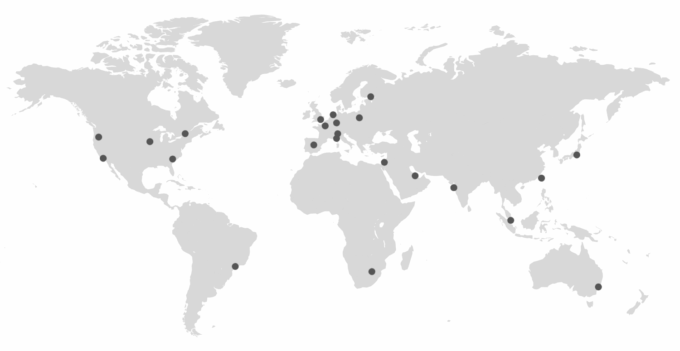When considering a VPS (Virtual Private Server) for your business or personal projects, two features often jump out from the spec sheets, network speed and unlimited data transfer. Both sound great on paper, but what do they really mean in practice? And more importantly, how can you tell if a VPS offer is truly as fast and as “unlimited” as it claims?
In this guide, we’ll take a practical look at how to evaluate these claims and what you should pay attention to when comparing VPS providers. Not all “unlimited” plans are created equal, and network speed isn’t just about download numbers.
Understanding Network Speed in VPS Plans
Network speed on a VPS refers to how quickly data can be transmitted between your server and the rest of the internet. It’s often expressed in megabits per second (Mbps) or gigabits per second (Gbps). But it’s not just about peak numbers.

Source: hostnoc.com
Real speed depends on a few key factors:
- Port speed: A server with a 1 Gbps port might sound impressive, but if your plan is capped at 100 Mbps, that’s all you get.
- Shared vs. dedicated bandwidth: Many low-cost VPS plans share bandwidth between users. This can mean slower performance during peak hours.
- Latency: Especially important for applications like gaming, VoIP, or trading platforms. A fast connection means nothing if the latency is poor.
Let’s say you’re looking at a few different VPS offers and they all list “1 Gbps connection.” It looks great on the surface, but ask: Is that per user or shared across a node? And is it consistently available or just theoretical?
If you’re seeking strong connectivity in Central Europe, it’s worth checking VPS providers in Czech Republic. These providers often balance competitive pricing with serious attention to infrastructure quality, which includes fast port speeds, reliable uplinks, and clearly defined bandwidth policies.
Where Server Location Comes into Play
Even the fastest port speed won’t do much good if your server is thousands of kilometers away from your users. The physical location of the data center affects both latency and packet loss.
What to look for in location:
- If your primary audience is in Europe, choose a VPS located in Europe (like Prague or Brno).
- For global reach, look for providers offering CDN integration or multi-region availability.
- Ask about peering relationships—does the data center connect directly to major internet exchange points?

Source: debugbear.com
Tip: You can use public tools like ping or traceroute to test the latency of different VPS offers before you buy.
How to Evaluate Unlimited Data Transfer Offers
This is where things often get misleading. Most VPS providers tout “unlimited bandwidth” or “unmetered traffic,” but here’s the catch—there’s always a limit somewhere.
What you need to check:
- Is the bandwidth truly unmetered, or just unmetered until a certain threshold?
- Is port speed throttled after reaching a usage cap?
- Is the provider using fair use policies to limit you quietly when usage spikes?
Many hosting companies operate under what’s called a Fair Usage Policy. This means you can use as much data as you like, until your usage becomes “excessive”, which, conveniently, is rarely defined clearly. It’s not uncommon for providers to throttle speeds once you pass a certain limit, even if they call it unlimited.
Digging Into the Fine Print ─ Key Terms to Understand
Some VPS plans throw around phrases that sound impressive but mean very little without context. Here’s a short breakdown of what to keep an eye on:
|
Term |
What It Really Means |
| 1 Gbps Port | Maximum speed your server can reach—but not always guaranteed. |
| Unmetered Bandwidth | You won’t be charged by GB, but you might get throttled if usage is too high. |
| Burstable Speed | You can hit high speeds, but only for short periods. |
| Traffic Pooling | Bandwidth shared across multiple VPS users. |
Always ask for a Service Level Agreement (SLA) if you’re running a business-critical site or application.
Benchmarks and Tools ─ Test Before You Trust
Don’t rely solely on what’s printed in the product description. Use real-world benchmarks:
- Speedtest CLI: Run a speed test directly from your VPS instance.
- iperf3: Test raw bandwidth between two points.
- MTR (My Traceroute): Analyze latency and packet loss in real time.
- Network uptime monitors: Services like UptimeRobot or Pingdom can give you historical availability data.
If a provider is confident in their infrastructure, they won’t mind you running these tests. In fact, many offer demo servers or short-term trial plans for this exact reason.

Source: nyanshiba.com
When to Prioritize Speed Over Bandwidth ─ and Vice Versa
The truth is, you don’t always need both. Depending on what you’re running, one may matter more than the other.
- High-speed port (1 Gbps+) is critical for:
- Streaming servers
- File hosting
- Real-time apps
- Unlimited data is key for:
- Large websites with thousands of visitors
- Backup servers
- Media-heavy platforms
For example, if you’re hosting a cloud-based development environment, speed matters more than total bandwidth. If you’re backing up terabytes of data nightly, unlimited bandwidth becomes your focus.
Avoiding Common Pitfalls When Comparing VPS Offers
It’s easy to get distracted by flashy specs. Here are some traps people fall into:
- Falling for marketing buzzwords – “Blazing fast” means nothing without numbers.
- Ignoring fair use clauses – These often hide bandwidth caps.
- Assuming 1 Gbps = guaranteed speed – It’s usually shared or burstable.
- Not testing latency to your actual audience – Raw speed is pointless with high latency.
- Confusing traffic limits with port speed – One measures volume; the other measures velocity.

Source: webwerks.in
Final Thoughts ─ It’s About the Right Fit, Not the Flashiest Plan
Choosing a VPS with good network speed and unlimited bandwidth isn’t just about picking the one with the biggest numbers. It’s about matching those specs to your actual needs—and asking the right questions before you commit.
If you run a lightweight site, you won’t need a full gigabit port or endless data. But if you’re streaming, hosting user-generated media, or managing large-scale databases, those specs matter.
Evaluate the honesty of the offer, test the infrastructure when possible, and don’t hesitate to reach out to the provider for clarification. The best VPS hosting is the one that fits your traffic patterns, budget, and reliability expectations—without hidden surprises.







